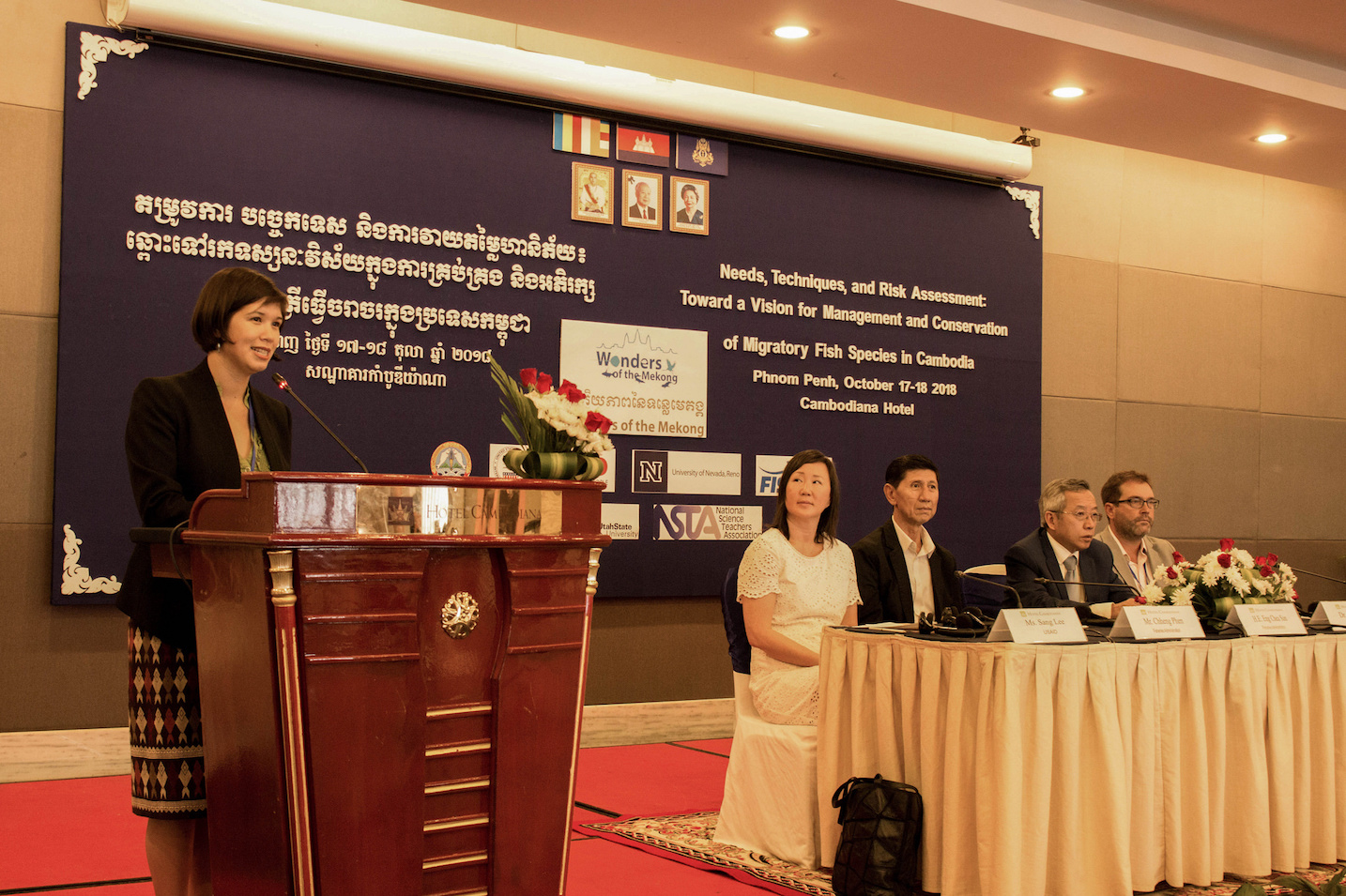
Migratory fish are the one of the many great wonders of the Mekong River. Every fall, these incredible fish undertake a massive migration in Cambodia out of the Tonle Sap Lake and into the mainstem Mekong River, on a scale that rivals the abundance of wildebeest migrating across the Serengeti in Africa. These fishes are extremely diverse, including some of the largest fishes in the world, and also contribute to food security and livelihoods for millions of people in the Mekong Basin. Migratory fishes big and small are especially important in Cambodia, which has one of the highest rates of freshwater fish consumption in the world (Hortle 2007). But despite their importance, no clear vision exists to manage and conserve the Mekong’s migratory fish across their diverse habitats throughout their life cycle. To help address this gap, The Wonders of the Mekong project recently organized a workshop called “Needs, Techniques, and Risk Assessment: Toward a Vision for Migratory Fish in Cambodia” on October 17-18 in Phnom Penh. The workshop was organized by FISHBIO, hosted by the Inland Fisheries Research and Development Institute and the University of Nevada, Reno, and funded by USAID.

The workshop brought together more than 65 participants from across Cambodia and the Mekong Basin, as well as a few international speakers. The goal of the workshop was to identify high-priority data needs for fish migration in the Mekong Basin, develop a shared vision for management and conservation of migratory fishes in Cambodia, and discuss tools that can be used to achieve this vision. Presentations and small group discussions identified a number of key data needs, or questions that needed to be answered to help manage migratory fish in Cambodia. These included identifying key habitats and spawning areas, migration routes and timing, and species life cycles, among many others. Speakers also presented on a variety of tools and techniques that can be used to study migratory fish, from telemetry and sonar cameras to otolith microchemistry and genetic techniques. However, participants also agreed that less technical approaches, such as the Local Ecological Knowledge (LEK) of fishers, has and will continue to be an important source of information about migratory fish in the region.

When participants were asked to envision successful future for migratory fish, in the region, a few distinct themes emerged. These included maintain abundant populations of fish that can sustain themselves and migrate freely, and also support the food security of local people. Good governance and enforcement is also needed to address threats and illegal fishing, as well as conservation measures to protect fish habitats and raise awareness about sustainable fishing practices. Regarding next steps to help achieve this vision, participants identified the need to coordinate among government agencies, and build trust and cooperation between authorities and local communities. It was also suggested that migratory fish management could be tied to the Sustainable Development Goals, which include sustainable water resource management. And, as was highlighted by plenary speaker Herman Wannigen, the founder of World Fish Migration Day, we all need to learn to “speak fish,” meaning we can all bring the needs of migratory fish into our regular professional conversations and discussions. We look forward for helping to develop the vision for Cambodia’s migratory fish management and conservation into the future.
Download Workshop Summary Report
Download Workshop Policy Brief (English version)
Download Workshop Policy Brief (Khmer version)
View more photos of the workshop on Flickr
